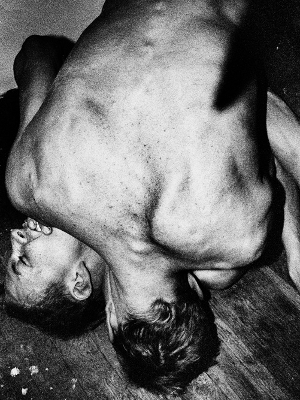Danish photographer Jacob Aue Sobol presents his cycle entitled “Arrivals and Departures: Moscow – Ulaanbaatar – Beijing” in Prague’s Leica Gallery. The photographs were taken during his travels on the Trans Siberian Railway in the spring of 2013. Sobol used Leica M Monochrom, a digital camera which was specially developed for black-and-white photography.
Jacob Aue Sobol is a young Danish photographer (born in 1976), who became known thanks to his cycle of photographs from the period of his life which he spent in a fishing village in Greenland. The cycle got its name after his girlfriend which he had at that time – Sabine. In 2005 Sobol was nominated for the Deutsche Börse Photography Prize. Apart from Greenland, Sobol has also lived and photographed in Guatemala, Tokyo and Bangkok. He gained the first prize in the photographic circus called World Press Photo, in the category of Daily Life Stories for his essay Indigenous Family which originated in Guatemala.
There are 26 out of 41 photographs from “Departures and Arrivals” exhibited in Prague. These are divided in the exhibition according to the places where they were taken. The photographs are large scale (90 x 60cm and bigger), black-and-white ink prints on Museo Silver Rag paper. One cannot help but think that a smaller format would probably work better in the given space. Visitors would be able to gain a greater distance and more photographs could be exhibited.
Sobol said about his black-and-white photographs: “Working with black and white has always been the most direct way for me to reach more existential questions. In black and white I feel my images are not bound to a specific location or time. They create their own universe.” Maybe this is one of the reasons why the exhibited pictures do not quite meet the geographical division. Sobol is not a photographer of monuments. He is consistent in following in the steps of the great photographers from the Magnum agency, whose member he is now: “I never found it interesting to look at someone from the other side of the street, or to be “invisible” as a photographer. I hope this is the reason why people never feel like a voyeur when looking at my images – because you feel that you are taking part. To me, this is when images grow from showing to being. This is when the pictures are not telling a story about “them” but about “us”.”
Sharp black-and-white contrasts and the blunt intimacy of Sobol’s photographs can remind us of Anders Petersen, a Swedish photographer who is famous for his photographs from Hamburg in the 1960s. When compared to Petersen, Soubol is more gentle, almost more lyrical in his view of reality. From his photographs, one cannot feel one is looking at an individual as a member of a specific (declassed) class, as is the case of Petersen’s visitors at Café Lehnitz. For Sobol, nudity is not the result of voyeurism but the result of the situation when photography is first of all an absorbed and interested look at something that does not need to be hidden. Sobol himself writes: “my ambition is always the same; to use the camera as a tool to create contact, closeness and intimacy.”
published: 4. 8. 2013







